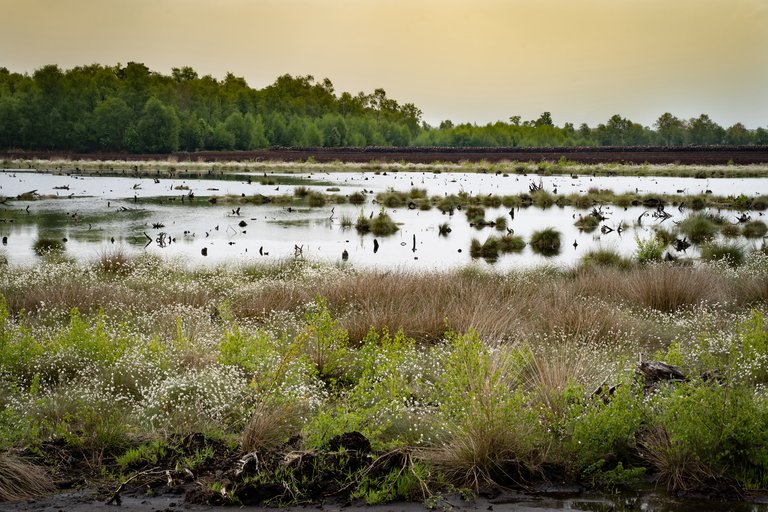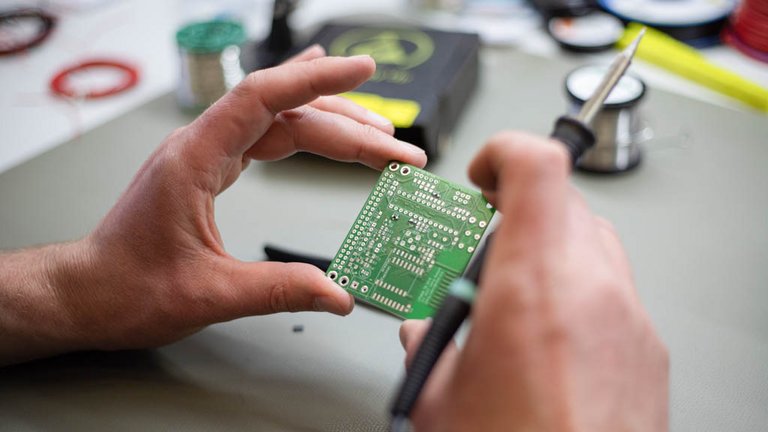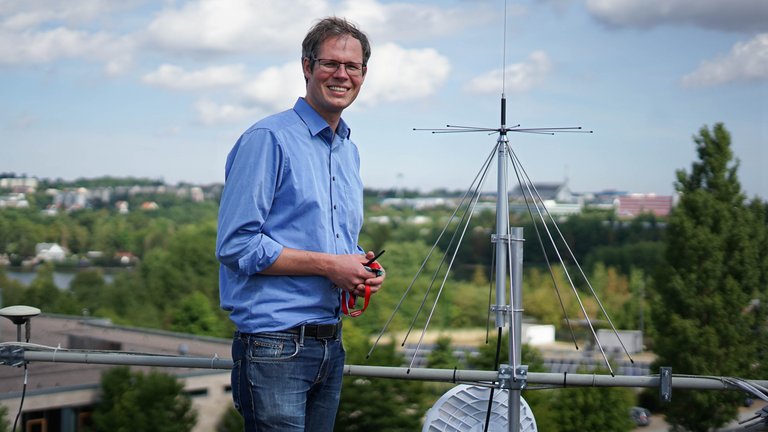In order to achieve the climate protection targets in Germany, it is not only necessary to drastically reduce greenhouse gas emissions in the energy sector, industry and transportation. As important carbon reservoirs, moorland soils must also be protected and drained moors must be rewetted. To ensure that they can still be used for agriculture, scientists from TU Ilmenau and Kompass GmbH, Ilmenau, have joined forces to research and develop a new type of wireless sensor technology and underground radio communication. This should make it possible to monitor both the CO2 emissions of peatlands and the nitrate contamination of groundwater in agricultural soils and to derive efficient measures to protect the environment and health on the basis of the measured values.
Rewetting peatlands: Sensor technology and underground radio communication to protect climate and health

Peatlands are considered to be excellent climate protectors: in their natural state, they store more carbon than all the world's forests put together. The reason for this is the high water content in the soil. More than four percent of the land area in Germany originally consisted of moorland. In recent centuries, however, almost all of them have been successively drained in order to make them usable for agriculture and forestry or to cultivate them.
The problem with this is that when the moors are drained, the peat is no longer in the water. This allows air to reach the plant material and microorganisms begin to decompose the plant remains in the soil. In the process, they release considerable amounts of the greenhouse gas carbon dioxide. Dry bogs alone were recently responsible for around 7.5 percent of greenhouse gas emissions in Germany. This corresponds to around 53 million tons of CO2 released into the atmosphere every year - or the emissions of all German air traffic.
"The climate protection targets for Germany can therefore only be achieved if, in addition to the main emitters such as building heating systems, power plants and industrial facilities, the numerous drained peatlands are also taken into account," explains Professor Jörg Robert, Head of the Group for Dependable Machine-to-Machine Communication at TU Ilmenau. The rewetting of moors is therefore also a declared goal of the German government. However, more than 70 percent of Germany's drained moors are now used as arable or pasture land. Jörg Robert:
Our idea is therefore to jointly develop a new type of sensor technology and radio communication in the soil that makes it possible to raise the groundwater level of the moor only to the extent that the peat body remains in the water and the carbon remains bound, but the surface can still be used for agriculture
Different types of sensors are to be investigated by Kompass GmbH and used both above and below ground.
Particularly energy-efficient and compact wireless sensors
In order to determine which water level is optimal for the environment and agriculture, the project partners first want to use innovative optical sensors to measure the carbon dioxide and methane content in the atmosphere at different heights above the ground. This measurement data will then be compared with the soil moisture at different depths. How the rainwater is then returned to the moors in the right quantity depends on the area in question, says Prof. Robert: "In the simplest case, you simply build gate valves in the drainage ditches and use them to regulate the water level or stop the moorland from being pumped away."

In a second step, the project team is researching wireless sensors to ensure that the sensors do not hinder farmers from working their land in the long term, meaning that the land can still be used by machines. They are to be inserted up to 40 centimetres deep into the soil so that they can remain there for many decades. Olaf Mollenhauer, Managing Director of Kompass GmbH:
In order to determine the composition of the fluids, i.e. atmospheric gases and aqueous solutions in the soil, the sensors must be particularly energy-efficient and extremely compact.
For this reason, and to eliminate the need for complex sensor cabling, each sensor element is equipped with its own LPWAN (Low Power Wide Area) radio module based on the mioty® standard developed by Fraunhofer IIS. In contrast to other LPWAN systems, such as LoRaWAN, mioty® allows the measurement data of many sensors to be transmitted simultaneously - over many kilometers at the lowest transmission power.
Innovative antenna concepts
"Another challenge is the special conditions for radio transmission of measurement data from the ground," says Prof. Robert:
The network should also achieve reliable communication when buried in the ground. Only with the help of a suitable communication system can the large amounts of data (big data) be transmitted to a receiving station and evaluated in a cloud.
The scientists at TU Ilmenau are therefore testing suitable frequency ranges and developing new antenna concepts, among other things.

At the same time, the research team wants to tackle another pressing environmental and health problem: The use of nitrogen fertilizers on agricultural moorland pollutes the groundwater with nitrate, making it more difficult to obtain clean drinking water. Jörg Robert:
By being able to precisely measure the nitrate content in the soil with the help of new technologies, we also want to enable farmers to minimize the use of fertilizers without sacrificing yields and thus reduce the nitrate content in groundwater.

The COMSENS+ (Communication Sensors for Sustainable Environments) project was created as part of the InSignA - Intelligent Signal Analysis and Assistance Systems performance center. It is made up of seven departments from TU Ilmenau, five Thuringian Fraunhofer institutes and the IMMS Institut für Mikroelektronik- und Mechatronik-Systeme gemeinnützige GmbH (IMMS GmbH), an affiliated institute of TU Ilmenau. Together with companies, the High-Performance Center aims to bring solutions in sensor technology and signal analysis into application.

The Free State of Thuringia is funding the COMSENS+ project from the European Regional Development Fund (ERDF) for three years.
Peatland protection as climate protection: What can I do?
Each and every one of us can also contribute to preserving peatlands as valuable climate protectors in our everyday lives by buying peat-free garden and potting soil. Peat is obtained by draining and mining peatlands. Peat accounts for up to 90 percent of commercially available garden and potting soil. Even organic potting soil or so-called "peat-reduced" soil can still contain large amounts of peat. Potting soil made from compost or wood or coconut fibers as a peat substitute is more environmentally friendly. |
Contact
Prof. Jörg Robert
Head of Dependable Machine-to-Machine Communication

